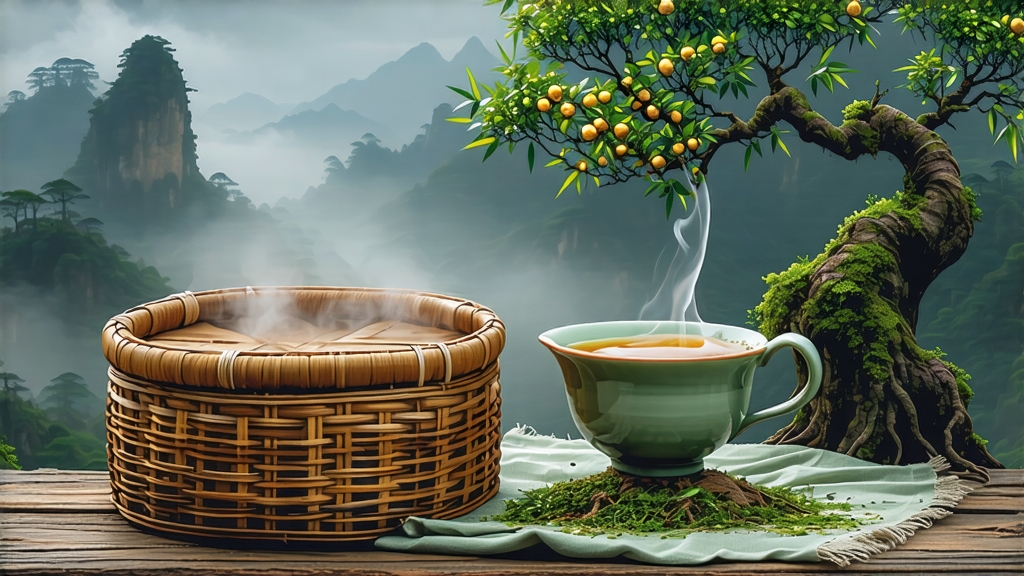
Tucked high on the mist-laden shoulders of Sichuan’s Meng Ding Shan, where perennial clouds brush the evergreen crowns of ancient tea trees, a yellow tea so rare that even seasoned Chinese connoisseurs speak of it in hushed tones quietly survives the march of modernity. Meng Ding Huang Ya—literally “Meng Ding Yellow Bud”—owes its existence to a convergence of imperial whim, monastic discipline and microclimate so exacting that attempts to replicate it beyond the original 1,500-metre ridge have failed for over twelve centuries. Unlike the better-known green teas of neighbouring hills or the dark bricks of post-fermented commerce, Meng Ding Huang Ya belongs to the smallest, most enigmatic of China’s six great tea families: yellow tea, a category whose annual global production is smaller than that of a single Pu-erh village. To understand this tea is to witness time being deliberately slowed, oxidation coaxed rather than prevented, and flavour coaxed into a mellow, custard-like complexity that once persuaded a Tang-dynasty emperor to grant the mountain perpetual tax exemption in exchange for a yearly tribute of exactly one hundred and fifty grams.
Historical whispers
The first written record appears in the 8th-century Classic of Tea, where Lu Yu praises “a yellowish bud from Meng Ding, sweet as spring water, fragrant as orchid”. During the Song dynasty the tea was pressed into tiny silver-foil cakes and carried by porters 2,000 km to Bianliang (modern Kaifeng), arriving still fragrant after forty days on the Tea-Horse Road. Ming scholars substituted loose leaf, discovering that when the buds are gently suffocated in cloth the leaf pigments slowly shift from jade to maize, unlocking amino acids that soften tannic edge into honeyed roundness. By 1850 the Qing court fixed the tribute weight at 350 g, wrapped in yellow silk—an imperial prerogative colour—hence the enduring word “yellow” in its name. Republican-era warlords, short of silver, paid bodyguards with Meng Ding Huang Ya, valuing one liang (50 g) above a Colt revolver. After 1949 the gardens were collectivised; output plummeted as farmers switched to higher-yielding green teas. Only in 2003 did a handful of Buddhist monks and a retired biologist resurrect the original cultivar and the painstaking yellowing protocol, rescuing the tea from museum status.
Cultivar & terroir
The plant itself is a Camellia sinensis var. sinensis land-race dubbed “Meng Ding Xiao Ye Zhong” (Meng Ding small-leaf type). Its leaves are unusually thick, with a waxy cuticle rich in aromatic precursors. The mountain forms a natural amphitheatre facing east; sunrise burns off night mist by 9 a.m., yet fog re-condenses at noon, creating a daily humidity swing between 55 % and 92 %. The soil is a crumbly siliceous yellow loam, pH 4.7, laced with magnesium ions that intensify theanine synthesis. Night temperatures drop 10 °C below daytime highs, forcing the bush to store sugars in the tender apical bud. These buds—picked when still closed, no longer than 2 cm and lighter than a paperclip—are the sole raw material for authentic Meng Ding Huang Ya.
Plucking ritual
The harvest window opens for only eight days each spring, beginning when local forsythia blooms and ending when the azalea petals start to curl. Pickers climb bamboo ladders before dawn, wearing woven rain-capes to keep body heat from warming the buds. A two-finger pluck snaps the bud cleanly; fingernails are forbidden because they bruise and trigger premature oxidation. The daily quota per worker is 250 g fresh leaf—barely enough to yield 50 g finished tea. Buds are deposited into bamboo cylinders lined with banana leaf, then carried downhill in wicker panniers suspended from a shoulder yoke so that no pressure bruises them.
Crafting “yellow” from green
The processing choreography follows four ancient verbs: sha qing (kill-green), men huang (sealed yellowing), fu huo (second firing), and zuo xing (final shaping). Yet each step is calibrated to slow, not stop, enzymatic life.
- Kill-green,